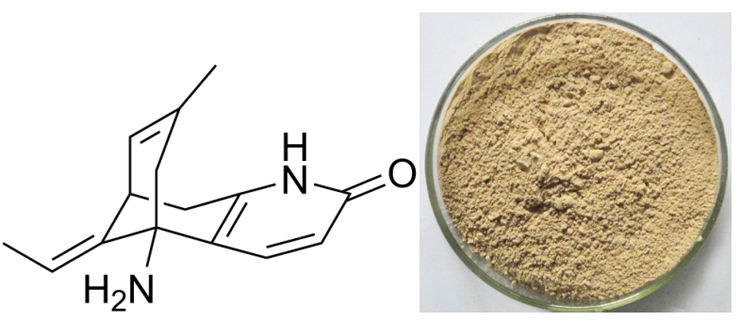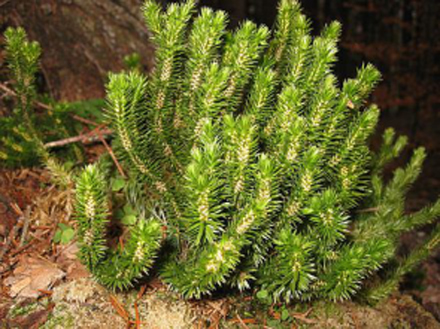New Arrival China Huperzine A in Guyana
New Arrival China Huperzine A in Guyana Detail:
[Latin Name]Huperzia serratum
[Source] Huperziceae whole herb from China
[Appearance]Brown to white
[Ingredient]Huperzine A
[Specification]Huperzine A 1% – 5%, HPLC
[Solubility] Soluble in chloroform, methanol, ethanol, slightly soluble in water
[Particle size] 80 Mesh
[Loss on drying] ≤5.0%
[Heavy Metal] ≤10PPM
[Pesticide residue] EC396-2005, USP 34, EP 8.0, FDA
[Storage] Store in cool & dry area, keep away from the direct light and heat.
[Shelf life] 24 Months
[Package] Packed in paper-drums and two plastic-bags inside.
[What is Huperzine A]
Huperzia is a type of moss that grows in China. It is related to club mosses (the Lycopodiaceae family) and is known to some botanists as Lycopodium serratum . The whole prepared moss was used traditionally. Modern herbal preparations use only the isolated alkaloid known as huperzine A. Huperzine A is an alkaloid found in huperzia that has been reported to prevent the breakdown of acetylcholine, an important substance needed by the nervous system to transmit information from cell to cell. Animal research has suggested that huperzine A’s ability to preserve acetylcholine may be greater than that of some prescription drugs. Loss of acetylcholine function is a primary feature of several disorders of brain function, including Alzheimer’s disease . Huperzine A may also have a protective effect on brain tissue, further increasing its theoretical potential for helping reduce symptoms of some brain disorders.
[Function] Used in alternative medicine, huperzine A has been found to act as a cholinesterase inhibitor, a type of medicine used to prevent the breakdown of acetylcholine (a chemical essential to learning and memory).
Not only used as a treatment for Alzheimer’s disease, huperzine A is also said to enhance learning and memory and to protect against age-related cognitive decline.
In addition, huperzine A is sometimes used to boost energy, increase alertness, and aid in the treatment of myasthenia gravis (an autoimmune disorder that affects the muscles).
Product detail pictures:

Related Product Guide:
Our organization insists all along the quality policy of "product quality is base of business survival; purchaser gratification is the staring point and ending of an business; persistent improvement is eternal pursuit of staff" as well as the consistent purpose of "reputation 1st, purchaser first" for New Arrival China Huperzine A in Guyana , The product will supply to all over the world, such as: Macedonia, Ecuador, Namibia, Our company abides by the management idea of "keep innovation, pursue excellence". On the basis of assuring the advantages of existing merchandise, we continuously strengthen and extend product development. Our company insists on innovation to promote the sustainable development of enterprise, and make us become the domestic high-quality suppliers.
Well it seems that additional attempt is needed if you choose to fly distinct while looking for the best erectile dysfunction tablets Male Enhancement , Better Sex Pill , Male Enhancement Pill , Male Sex Pill available. What do you think about talking to an professional to get the solutions immediately? She might talk about your issue with others, may be without any objective of damaging you, and that is a prospective danger. At this factor you need to choose what danger you want to take. Health and fitness or shame? It’s your choice.Read this Best Men Improvement content and discover out why I have been DISAPPOINTED!!Please visit over website @ www.impulsemarket.com | Corporate Phone Number 1-855-55-HERBS
Cantaloupes or melons, wonderfully delicious with rich flavor, but very low in calories (100 g fruit has just 34 calories) and fats. Nonetheless, the fruit is rich in numerous health promoting poly-phenolic plant derived compounds, vitamins, and minerals that are absolute for optimum health.
https://youtu.be/NKow5mQ6A60
https://youtu.be/FS4yWcBmMKE
https://youtu.be/iUL636FGFJ8
The fruit is an excellent source of Vitamin A, (100 g provides 3382 IU or about 112% of recommended daily levels) one of the highest among cucurbita fruits. Vitamin A is a powerful antioxidant and is essential for healthy vision. It is also required for maintaining healthy mucus membranes and skin. Consumption of natural fruits rich in vitamin A has been known to help protect from lung and oral cavity cancers.
It is also rich in antioxidant flavonoids such as beta-carotene, lutein, zea-xanthin and cryptoxanthin. These antioxidants have the ability to help protect cells and other structures in the body from oxygen-free radicals and hence; offer protection against colon, prostate, breast, endometrial, lung, and pancreatic cancers.
https://youtu.be/FqZxALXP_5k
https://youtu.be/t12p4AfMgv8
Zeaxanthin, an important dietary carotenoid, selectively absorbed into the retinal macula lutea in the eye where it is thought to provide antioxidant and protective UV light-filtering functions. It, thus, offers protection of eyes from “Age-related macular degeneration” (ARMD) disease in the elderly.
https://youtu.be/aQVseN1mKGo
https://youtu.be/oO12UCPI16Y
It is a moderate source of electrolyte, potassium. 100 g fruit provides 267 mg of this electrolyte. Potassium is an important component of cell and body fluids and helps control heart rate and blood pressure. It thus offers protection against stroke, and coronary heart diseases.
The fruit also contains moderate levels of B-complex vitamins, such as niacin, pantothenic acid and vitamin C, and minerals like manganese. Consumption of foods rich in vitamin-C helps the human body develop resistance against infectious agents and scavenge harmful oxygen-free radicals. Manganese is used by the body as a co-factor for the antioxidant enzyme, superoxide dismutase. Commercially, muskmelons are being used to extract an enzyme superoxide dismutase (SOD), which plays a vital role as strong first-line antioxidant defenses inside the human body.
https://youtu.be/NKow5mQ6A60
https://youtu.be/FS4yWcBmMKE
https://youtu.be/iUL636FGFJ8
https://youtu.be/FqZxALXP_5k
https://youtu.be/t12p4AfMgv8
https://youtu.be/aQVseN1mKGo
https://youtu.be/oO12UCPI16Y
The sales manager is very patient, we communicated about three days before we decided to cooperate, finally, we are very satisfied with this cooperation!







